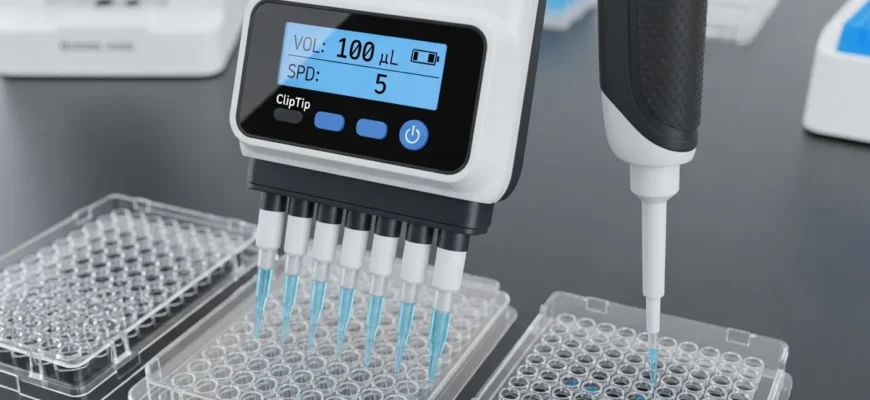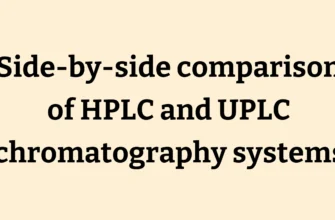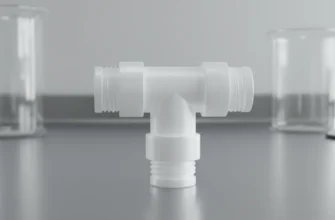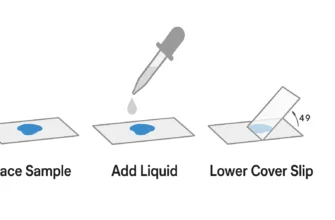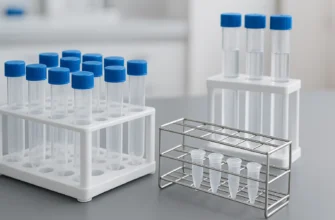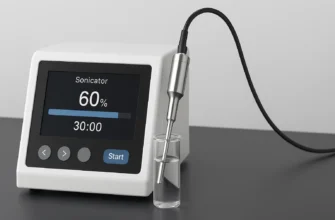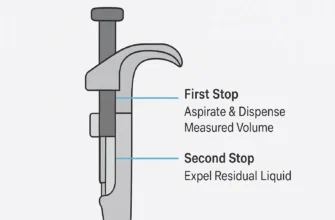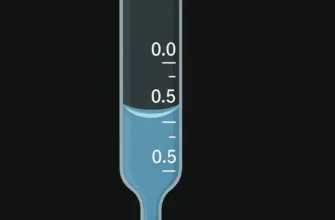Revolutionizing Laboratory Liquid Handling: Advanced Multichannel Pipettes with Adjustable Tip Spacing
Market-Driven Innovation in Laboratory Automation
The global laboratory automation market has experienced unprecedented growth, valued at USD 7.77 billion in 2024 and projected to reach USD 14.68 billion by 2034, reflecting a compound annual growth rate of 6.6%. This expansion is driven by increasing demands for high-throughput screening, precision medicine applications, and the need to minimize human error in critical analytical workflows.
Modern research laboratories process vast sample volumes across diverse labware formats, from individual microtubes and PCR strips to 96-well and 384-well microplates. This diversity creates significant liquid handling challenges, often forcing researchers into tedious, error-prone manual transfer procedures that compromise both efficiency and data integrity.
Understanding Adjustable Spacer Multichannel Technology
Fundamental Design Innovation
Adjustable spacer multichannel pipettes represent a revolutionary advancement in liquid handling technology, featuring multiple channels whose nozzle spacing can be modified dynamically. Unlike fixed-spacing multichannel pipettes limited to single plate formats, these instruments provide unprecedented versatility for transferring samples between labware with different tip spacing requirements.
The core innovation lies in variable nozzle spacing (also termed tip spacing or pitch), allowing users to smoothly adjust spacing with precision controls. This capability enables aspiration from 96-well plates with 9mm spacing and direct dispensing into 384-well plates with 4.5mm spacing, or transfer from tube racks with 14mm spacing directly to microplates.
Engineering Excellence in Mechanism Design
Manual pipettes utilize sophisticated mechanical systems where each channel connects to sliding carriages or linked gear assemblies. As users operate the adjustment mechanism, individual channel assemblies move in synchronized fashion, maintaining equal spacing between adjacent channels throughout the adjustment range.
Electronic pipettes incorporate advanced automation with Bluetooth connectivity and programmable protocols through dedicated applications like My Pipette Creator. These systems maintain the mechanical precision of manual adjustment while adding electronic tip ejection, programmable volume ranges, and data logging capabilities.
Advanced Multichannel Pipette Systems
Thermo Scientific E1-ClipTip™ Electronic Adjustable Tip Spacing Multichannel Equalizer Pipettes
The Thermo Scientific™ E1-ClipTip™ Electronic Adjustable Tip Spacing Multichannel Equalizer Pipettes represent the pinnacle of electronic pipetting technology. Available in multiple configurations with 6, 8, and 12 channels, these instruments offer volume ranges from 0.5µL to 1250µL across different models.
Catalog Numbers and specifications include:
-
4672010BT: 12-channel, 0.5-12.5µL, ClipTip 384 12.5 compatible
-
4672030BT: 8-channel, 1-30µL, ClipTip 384 30 compatible
-
4672080BT: 8-channel, 10-300µL, ClipTip 300 compatible
-
4672100BT: 8-channel, 15-1250µL, ClipTip 1250 compatible
Rainin Pipet-Lite XLS+ Multichannel Systems
Rainin Pipet-Lite XLS+ multichannel pipettes with the patented LiteTouch System (LTS) reduce tip ejection forces by up to 70%, significantly improving ergonomics and reducing repetitive strain injury risk. The LiteTouch System technology ensures consistent tip mounting and ejection with minimal force requirements.
Volume range specifications for adjustable spacer models include:
-
6-channel models: 9-19mm spacing, volumes from 5-1200µL
-
8-channel models: 9-14mm spacing, volumes from 5-1200µL
-
Manual increment adjustment with 0.05µL to 2µL increments depending on model
Technical Specifications and Compatibility
Tip Spacing Ranges and Applications
Adjustable tip spacing capabilities vary by manufacturer and model configuration:
-
Standard 96-well format: 9mm center-to-center spacing
-
384-well format: 4.5mm center-to-center spacing
-
Tube racks: Variable spacing from 10-19mm depending on tube size
-
PCR strips: 9mm spacing compatible with 96-well format
-
Gel boxes: Custom spacing adjustable to match horizontal gel box lane spacing
Compatible Tips and System Integration
Compatible Tips systems ensure proper sealing and accuracy across all channels. ISO 8655:2022 standards now require tip-pipette system calibration, meaning pipettes are only considered calibrated with the specific tip type used during calibration procedures.
ClipTip™ technology provides interlocking tip interface that locks tips securely until ejection, preventing dropped tips and sample loss. The system creates complete seals around each tip, enhancing accuracy and precision across all channels.
Laboratory Applications and Workflow Integration
Microplate Reformatting and High-Throughput Screening
Adjustable spacer pipettes excel in reformatting applications where samples must transfer between different plate formats. Eight-channel configurations can aspirate from 96-well plates and dispense into 384-well plates by compressing tip spacing from 9mm to 4.5mm.
This capability is essential for high-throughput screening workflows where samples progress from lower-density screening plates to higher-density confirmation plates. The ability to perform these transfers in single operations reduces workflow steps by up to 87% compared to traditional single-channel approaches.
Gel Loading and Electrophoresis Applications
Gel box and horizontal gel box loading represents a critical application where precise tip spacing adjustment enables efficient sample loading. Users can aspirate samples from PCR plates or tube racks and adjust spacing to match gel lane spacing precisely.
This application eliminates the tedious process of individual gel loading while reducing risks of lane skipping or gel puncturing common with manual techniques. The consistent spacing ensures uniform sample loading across all lanes.
Serial Dilutions and Complex Protocols
Adjustable spacer multichannel pipettes streamline serial dilution preparation and plate replication workflows. Users can create dose-response curves by aspirating from stock solutions and dispensing across multiple destination plates with consistent spacing and volume delivery.
Complex protocols like ELISA, qPCR setup, and cell-based assays benefit from the simultaneous processing capability, ensuring all samples receive identical treatment timing and reducing experimental variability.
Calibration Standards and Quality Assurance
ISO 8655:2022 Compliance Requirements
The updated ISO 8655:2022 standard establishes comprehensive requirements for piston-operated volumetric apparatus (POVA) calibration and testing. The new standard treats the pipette and tips as integrated systems, requiring calibration with specific tip types.
Multichannel pipettes now have separate maximum permissible error limits distinct from single-channel instruments. The standard requires testing at 100%, 50%, and 10% of nominal volume with multiple tip changes per volume tested to account for tip manufacturing variation.
Channel-to-Channel Consistency
Channel consistency represents a critical performance parameter for multichannel pipettes. Proper tip fit and pipette maintenance ensure uniform volume delivery across all channels, with coefficient of variation (CV) typically below 2% for well-maintained instruments.
Electronic pipettes generally provide superior channel-to-channel consistency compared to manual pipettes, with reduced user technique variability and automated volume delivery protocols.
Advanced Features and Integration
Electronic Automation and Connectivity
E1-ClipTip™ pipettes feature Bluetooth connectivity enabling integration with laboratory management systems and data logging capabilities. The My Pipette Creator app allows programming complex protocols from computers and sharing protocols between instruments and laboratory personnel.
Electronic tip ejection and index finger operation reduce thumb strain associated with traditional manual pipettes, improving ergonomics during extended pipetting sessions. Password protection features enable GLP/GMP compliance and user access control.
RFID Technology and Calibration Tracking
Modern multichannel pipettes incorporate RFID tags for advanced calibration tracking and service record maintenance. These tamper-proof systems record service cycles, calibration dates, and performance data in compliance with GLP/GMP standards.
Each pipette maintains a unique serial number and service history accessible through RFID readers and associated software systems. This capability supports comprehensive quality management and regulatory compliance in validated laboratory environments.
Selection Criteria and Procurement
Volume Range and Channel Configuration
Number of Channels selection depends on application requirements and throughput needs. 8-channel models match 96-well plate rows, while 12-channel configurations enable full column processing. 6-channel models offer extended tip spacing ranges (9-19mm) suitable for diverse labware formats.
Volume range selection should encompass the most common experimental volumes while maintaining optimal accuracy and precision. Available ranges span from 0.5µL to 1250µL across different models, with electronic models offering programmable volume settings.
Technical Documentation and Support
Data sheets, application notes, and material/product numbers provide essential technical specifications for procurement and validation purposes. Catalog numbers enable precise ordering and parts tracking throughout the instrument lifecycle.
Compatible tips specifications ensure proper system integration and calibration compliance under ISO 8655:2022 requirements. Manufacturers must provide tip compatibility lists and performance verification data for each pipette-tip combination.
Ergonomic Benefits and User Safety
Repetitive Strain Injury Prevention
Adjustable spacer multichannel pipettes significantly reduce repetitive motions associated with single-channel pipetting, decreasing musculoskeletal injury risk. Electronic models with automated tip ejection further reduce physical stress during extended pipetting sessions.
The LiteTouch System reduces tip mounting and ejection forces by up to 70%, creating a smoother, less strenuous pipetting experience. Ergonomic handle designs and balanced weight distribution minimize hand fatigue during prolonged use.
Workflow Efficiency and Time Savings
Multichannel processing capability provides dramatic throughput improvements, with 96-sample transfers completed in minutes rather than the 30+ minutes required for single-channel approaches. This time savings translates directly to increased laboratory productivity and researcher efficiency.
The elimination of manual reformatting steps removes major workflow bottlenecks while reducing error potential through decreased handling steps. Each eliminated transfer step reduces cumulative error and improves overall data quality.
Future Technology Integration
Laboratory Automation Integration
Adjustable spacer multichannel pipettes represent essential components in laboratory automation strategies, bridging manual dexterity with high-throughput efficiency. As laboratories advance toward total automation, these instruments provide critical flexibility for diverse labware formats and experimental protocols.
Electronic models with programmable protocols and data connectivity enable seamless integration with laboratory information management systems (LIMS) and automated workflows. This integration supports data integrity, protocol standardization, and quality assurance in modern research environments.
Transforming Laboratory Liquid Handling
Adjustable spacer multichannel pipettes represent a fundamental advancement in liquid handling technology, combining the speed of multichannel processing with the versatility of single-channel flexibility. By enabling seamless transitions between diverse labware formats—from individual tubes to high-density microplates—these instruments eliminate traditional workflow bottlenecks and error sources.
The integration of advanced features including ClipTip™ technology, LiteTouch Systems, and electronic automation creates ergonomic, precise, and efficient liquid handling solutions suitable for demanding research applications. ISO 8655:2022 compliance and RFID-based calibration tracking ensure regulatory compliance and data integrity in validated environments.
As laboratory automation continues expanding with market growth projected to USD 14.68 billion by 2034, adjustable spacer multichannel pipettes provide essential flexibility and precision for next-generation research workflows. Investment in these advanced liquid handling systems directly translates to improved productivity, enhanced data quality, and competitive advantage in modern laboratory environments.

